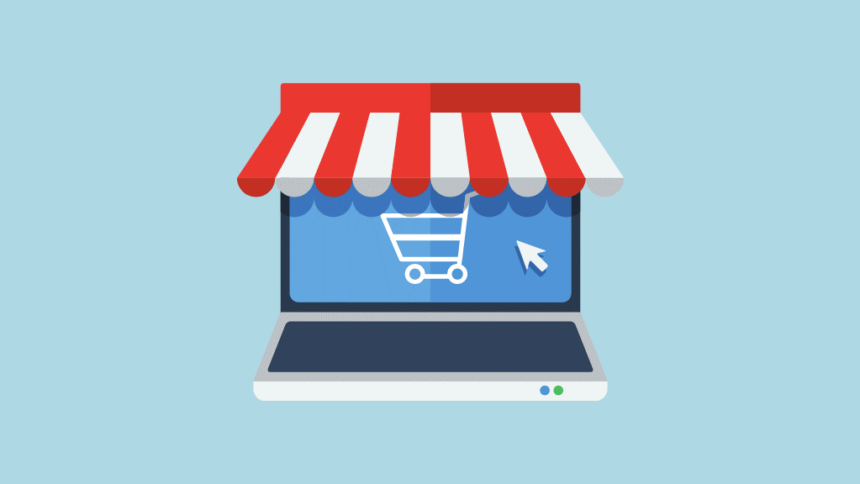An online store is a business model that sells products or services over the Internet. It’s becoming increasingly popular for small businesses due to its ease of setting up and managing.
To have a successful online store, it’s essential to select the correct products to sell and design an appealing, user-friendly site. Furthermore, marketing your website helps bring in customers.
Creating a website
Establishing an online store is a great way to sell your products and services without needing to pay expensive fees to third-party vendors. Your website can also serve as a vehicle for generating leads and promoting your brand. Before beginning to construct such a venture, consider who your target customers are and what problems it will address with the platform.
If you’re just starting out, a free website builder might be the ideal starting point. These are user-friendly and offer plenty of features that will enable you to craft an attractive site. Choose from various templates and themes to craft the ideal site.
Once your content is created, uploading it onto a Content Management System (CMS) such as WordPress is the fastest and simplest option compared to using web page builders for creating your site.
Setting up your hosting and domain name are essential steps for setting up your website. These elements determine how visitors find you, as well as the look of the page. Selecting a short, memorable domain name is especially essential here.
Once your domain and hosting are in place, it’s time to begin building your website. There are a few steps that need to be completed such as uploading products and selecting how they should be displayed on your page.
First and foremost, you’ll need to determine the size of your product photos. This is essential as it will influence customers’ decisions on whether to buy from you or not. You have two options: display all images at one size or create custom sizes for different displays.
Uploading high-resolution images to your website can help speed up page loading time and even boost rankings with search engines.
When showcasing your products on your website, image quality is of the utmost importance. A low-res image can cause items to appear blurry or out of focus.
Choosing a domain name
Selecting a domain name for your online store is one of the most crucial decisions you will make when starting up. It serves as your website’s identity on the internet and should be short and memorable so customers can quickly recall it. When selecting a domain name, keep it simple yet memorable so customers remember it easily.
Once you’ve chosen the ideal domain name, it’s time to register it with a domain registrar. They usually charge annual registration fees so it’s important to select a registrar based on their rates and what services they provide.
Many domain registrars also provide email services, which is great if you need to manage customer emails as well. With their domain search tool, you can check if the domain you’ve selected is available.
If you’re having trouble coming up with a domain name for your store, try using a domain generator. This will generate both popular and alternative domains for consideration. It is wise to get several ideas before selecting the best one for your venture.
When selecting a domain name for your online store, it’s important to pick one that’s both memorable and accurately describes the products you sell. You can do this by including keywords and phrases within the title of your domain – especially if you plan on utilizing SEO techniques to drive visitors to your website.
When targeting local or international audiences, it’s essential to find a unique name that stands out and grabs attention. While this can be challenging, the effort is worth it in the end.
Avoid choosing long or complex domain names that can be hard for users to remember and type. Furthermore, select names that reflect your brand’s image; this will help ensure authenticity on the web.
Another tip is to test your domain name in a real-life setting by calling family and friends and asking them if they can spell it correctly. This will give you an indication of how long people will remember it and be able to type it on their phone or computer correctly.
Choosing an e-commerce platform
E-commerce platforms are essential tools for providing an effortless online store experience and managing sales. They provide all the necessary features to sell products and services online, such as inventory control, order processing, customer service support, and more.
When selecting an e-commerce platform, there are plenty of options to consider, from industry giants to free open source solutions. While each has its advantages and drawbacks, ultimately you need to find the one that works best for your business model.
To make the ideal decision, you must understand your needs and requirements in order to assess which features are essential for your business. Functionality – in terms of ease-of-use, responsiveness, speedy navigation and optimization for mobile devices – should be the top priorities when making this choice.
Additionally, ensure your e-commerce platform is search engine friendly and offers built-in SEO capabilities to help boost visibility on Google. Furthermore, ensure the platform can scale and expand as your business expands.
No matter the size of your business, whether you’re a sole proprietor or part of a larger corporation, having an effective e-commerce platform is paramount for growth. Being able to monitor customer behavior and make informed decisions about marketing tactics, sales volumes, or product offerings will give your enterprise an edge over its competition.
If you’re searching for an e-commerce platform that can assist your business in growing, make sure it is scalable and has excellent customer support. Furthermore, ensure the platform is customizable with a strong community of users and buyers.
Another essential factor is integrations and plugins – these enable you to connect your e-commerce platform with other systems, adding features that make the site more appealing for visitors.
For instance, if you’re selling products and services across various industries, having an integrated accounting solution is essential. Furthermore, your e-commerce platform should be compatible with tools like customer loyalty programs, email marketing, payment & shipping processes.
Setting up your store
No matter if you’re just starting out or have been selling online for years, setting up your store is an essential element of running a successful business. This includes selecting products to sell, designing your site and adding features that will boost sales and conversions.
Selecting the ideal e-commerce platform is critical for your store’s success. When making your selection, take into account factors like business objectives, operational model and vertical, as well as technical requirements. The ideal platforms offer a straightforward user interface and offer tailored support tailored specifically to your requirements.
Once you’ve selected an e-commerce platform, the next step is creating an account and setting up your store. This includes selecting a domain name (which usually comes included with the package), customizing your website, adding products, configuring settings – all in one place!
Once your store is up and running, you can begin marketing it to attract new customers. This includes social media campaigns and content marketing to drive traffic. Furthermore, search engine optimization (SEO) will help boost your rankings on Google and other search engines.
Your website should provide detailed information about the products you sell. This includes photos, videos, text descriptions and other content to help potential buyers decide if your offering is suitable for them.
Content you add to your website can help boost its rankings on search engines, increasing both its visibility and sales. The secret is including keywords in product descriptions so shoppers can find your store when they search for a particular item.
When creating product listings, it’s wise to include high-quality photos of the items being sold. This gives customers a better idea of what your goods look like and makes navigating through your site much smoother. It’s wise to include detailed information about your products, such as their specifications and other important data. You can either use a free tool for creating professional-looking product images and descriptions, or hire an experienced graphic designer to do it for you.



